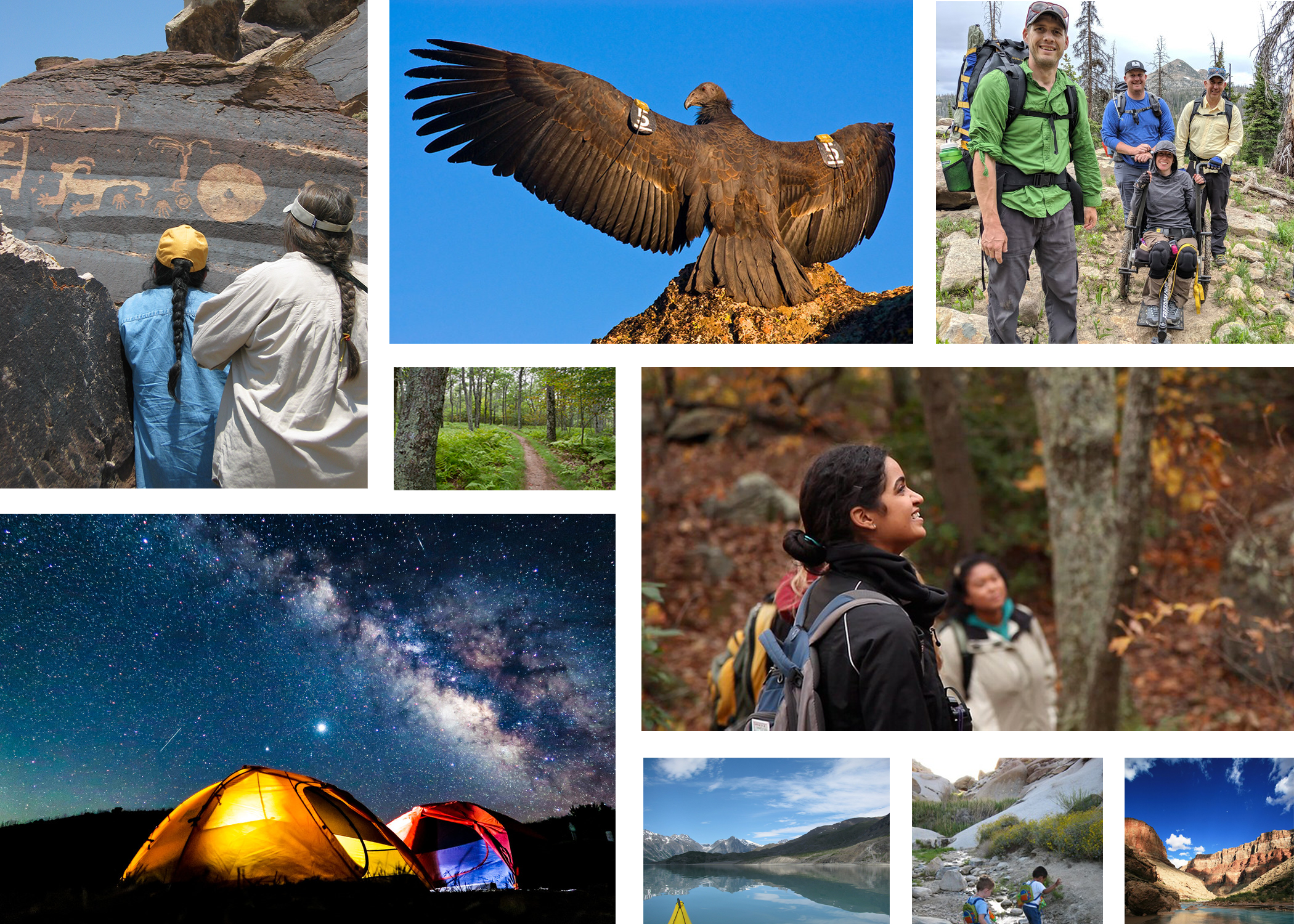Wilderness Benefits are Rooted in Wilderness Character
The National Wilderness Preservation System protects over 111 million acres of federal public land through wilderness designation, managed by the National Park Service (NPS), Bureau of Land Management, US Fish and Wildlife Service, and US Forest Service. The NPS is responsible for the stewardship of over 44 million acres of designated wilderness. When combined with other NPS lands managed as wilderness per policy, over 80 percent of all NPS lands are managed as wilderness.
So why is wilderness necessary if national parks are already “protected”? While wilderness often amplifies existing benefits of national parks, wilderness also offers diverse and distinct social, cultural, and ecological benefits rooted in wilderness character preservation. This holistic concept protects the biophysical environment, personal experiences, and symbolic meanings that collectively distinguish wilderness from general backcountry and frontcountry areas on federal lands.

Wilderness Benefits
Wilderness preserves cultural values of place (including cultural sites and landscapes), ecosystem services like headwaters-to-downstream protection of critical water supplies and class I air quality areas (42 of the 48 class I areas in the NPS), habitat protection for species with small (pika!) and large (elk!) ranges, and more. This scale of preservation is supported by the prohibition of some extractive activities like logging, mining, oil and gas drilling, industrial development, and permanent road building.
Human-powered forms of access are prioritized and protected in wilderness. Wilderness can be explored by boot, wheelchair, paddle, horse, and more.
The concept of “untrammeled” recognizes the importance of people co-existing with the planet, where people are thoughtful about actions they take that might interfere with the rest of the natural world. In this way, wilderness is a place where we can feel part of, rather than apart from, the rest of the natural world.
The concept of “solitude or primitive and unconfined recreation” recognizes many activities are appropriate and compatible with wilderness, especially those that rely on human power, enhance traditional experiences and skills, and give us a chance to ‘unplug’. Opportunities for connection are not disrupted by unwanted sights and sounds of others. Achieving this quality is deeply personal and experientially varies among people and cultures.
Specific public purposes (or uses) of wilderness are described in the Wilderness Act, Section 4b, “Except as otherwise provided in this Act, wilderness areas shall be devoted to the public purposes of recreational, scenic, scientific, educational, conservation, and historical use.” These diverse uses position wilderness as a concept and place that spans many interest types, including for people who access wilderness and those who do not.
With over 80 percent of all NPS lands managed as wilderness, these areas provide the broader scenic and soundscape backdrop for many frontcountry settings in national parks. The landscape buffer from higher intensity development that wilderness affords can be appreciated by frontcountry users too.
Wilderness areas are a part of broader NPS units, like national parks, monuments, preserves, lakeshores, seashores, and more. Many of the benefits of NPS units are amplified in and by NPS wilderness. For example:
- Settings that support mental and physical health
- Settings that inspire connections with people and place
- Enhanced economic value for regional and local economies
- Conservation of natural and cultural resources
"For the permanent good of the whole people..."
The Wilderness Act states that the National Wilderness Preservation System was created “for the permanent good of the whole people.” This means wilderness has the potential to be of lasting beneft to everyone. What makes you feel connected to wilderness? Through these connections, we can help sustain the benefts of wilderness for the whole people.
Last updated: July 10, 2024
